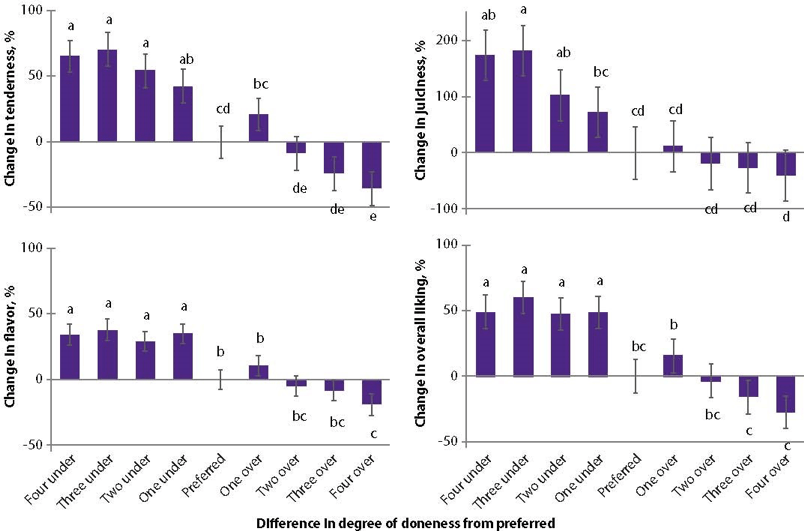Objective: The objective of this study was to determine the impact of feeding consumers of varying degree of doneness preferences steaks cooked to multiple degrees of doneness on their perceptions of beef palatability.
Study Description: Paired Low Choice frozen steaks from the posterior half of the strip loin were randomly assigned a degree of doneness of rare (140°F), medium-rare (145°F), medium (160°F), medium-well (165°F), or well-done (170°F). Consumer panelists, prescreened to participate in panels based on their degree of doneness preference, were served steak samples cooked to each of the five degrees of doneness under low-intensity red incandescent lighting to mask any degree of doneness differences among samples. Next, consumers were served steak samples under white incandescent lighting, with white fluorescent background lighting. Pre-screening consumers for degree of doneness preference allowed for a measure of the impact of “missing” the consumer’s ideal degree of doneness and quantification of the impact of both undercooking and overcooking steaks on consumer beef palatability ratings.
Percentage change in consumer sensory ratings between the red- and white-lighted testing to assess the impact of undercooking and overcooking steaks.
abcde Means within the same sensory characteristic without a common superscript differ (P < 0.05).
The Bottom Line: When steaks are overcooked, palatability ratings decrease; however, undercooking has a positive effect on palatability perception regardless of the consumer’s degree of doneness preference.
View full research report by authors L. L. Prill, L. N. Drey, J. L. Vipham, M. D. Chao, J. M. Gonzalez, T. A. Houser, E. A. Boyle, and T. G. O’Quinn at https://newprairiepress.org/kaesrr/vol5/iss1/.
